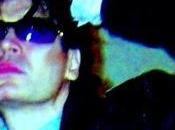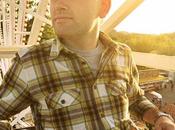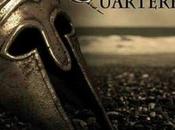Riprendiamo la serie dei post dedicati all’ interpretazione liederistica comparata. Contrariamente a quanto accaduto finora, la serie non seguirà più un ordine cronologico ma mi soffermerò di volta in volta su brani scelti per la loro importanza. Rimarrà invece immutato l’ impianto generale della rubrica, con gli ascolti comparati accompagnati da contributi critici e musicologici. Ciò premesso, veniamo al Lied che sarà esaminato questa volta. Si tratta di Der Doppelgänger, penultimo brano della raccolta pubblicata dopo la morte del compositore col titolo Der Schwanengesang. Come sappiamo, l’ editore Tobias Haslinger pubblicò questa serie di composizioni liederistiche, le ultime scritte da Schubert, pochi mesi dopo la morte del musicista. Nell’ autografo i tredici brani si susseguono nell’ ordine rispettato per la pubblicazione, ma non esistono indicazioni che facciano pensare a un ciclo unitario come nel caso di Die Winterreise e Die schöne Müllerin. Alcune lettere del musicista ipotizzano anzi l’ intenzione di pubblicare separatamente la serie di Lieder su testo di Heinrich Heine della quale Der Doppelgänger è il brano conclusivo. Il titolo “Canto del cigno” fu scelto dall’ editore pensando al fatto che si tratta delle ultime pagine composte da Schubert. Proprio per questo motivo, Haslinger aggiunse ai tredici brani dell’ autografo Taubenpost su testo di Johann Gabriel Seidel, in assoluto l’ ultimo Lied scritto dal compositore.
Ecco il testo di Heine musicato da Schubert. Nel Buch der Lieder del grande poeta renano, la composizione non ha alcun titolo.
Still ist die Nacht, es ruhen die Gassen,
In diesem Hause wohnte mein Schatz;
Sie hat schon längst die Stadt verlassen,
Doch steht noch das Haus auf demselben Platz.Da steht auch ein Mensch und starrt in die Höhe,
Und ringt die Hände, vor Schmerzensgewalt;
Mir graust es, wenn ich sein Antlitz sehe -
Der Mond zeigt mir meine eigne Gestalt.Du Doppelgänger! du bleicher Geselle!
Was äffst du nach mein Liebesleid,
Das mich gequält auf dieser Stelle,
So manche Nacht, in alter Zeit?
Qui di seguito la traduzione italiana.
Quieta è la notte, riposano le vie,
In questa casa abitava il mio tesoro;
Da lungo tempo ella ha lasciato la città,
Eppur la casa sta allo stesso posto.C’è pure una persona e fissa in alto,
E torce le mani, per violento dolore;
Io provo orrore, quando ne scorgo il volto -
È il mo sembiante che la luna mi mostra.Tu sosia! Tu cereo compagno!
Che ti scimmiotti a fare il mio cruccio d’amore,
Che proprio qui mi ha causato tormento,
Più di una notte, in epoca lontana?
(traduzione di Anna Maria Curci)
Veniamo ora ai contributi critici. Un’ esauriente analisi della composizione è stata effettuata dal musicologo David Løberg Code, dicente alla Western Michigan University School of Music, in questo saggio di cui riporto la parte iniziale.
“Still ist die Nacht” is the opening line of an untitled poem in Heinrich Heine’s collection, Die Heimkehr. Most of us know this poem by its inclusion in Franz Schubert’s Schwanengesang. Regarding Schubert’s setting of the poem, Jack Stein describes it as “painfully wrong in its interpretation of the poem.” For example, “the first stanza, which Schubert sets in a darkly atmospheric, highly charged recitative over somber chords…is in reality the innocuous opening typical of many Heine poems, revealing absolutely nothing of the emotional fireworks to come.” (Stein 1971, 89) Stein seems to be concerned that Schubert’s music prematurely gives away something of the ending, thus altering the narrative structure of Heine’s poem. I would agree that Schubert has dramatically restructured the way in which one experiences the poem, but it is pointless to chastise the musical introduction, as the poem has already been altered by Schubert’s lifting of the word “doppelgänger” from Heine’s third stanza and placing it prominently in the title.
[2] Schubert’s invocation of “Der Doppelgänger” brings to the foreground a host of cultural myths and imagery that would otherwise be absent from the opening of Heine’s poem. Literally meaning the ‘double-goer,’ the idea of a “spirit double, an exact but usually invisible replica of every human, bird, or beast is an ancient one.” (Encyclopaedia Brittanica 1985, 182) In Schubert’s time, the character of the doppelgänger was probably best known through the literary works of Johann Wolfgang Goethe and E.T.A. Hoffmann. That Schubert was familiar with the myth is evident, not only due to his choice of title, but even because of his spelling of the word. In the original poem, Heine uses the word “doppeltgänger,” (doubled-goer) while Schubert (omitting the “t”) chose the more common form of the word. Furthermore, Given that Heine uses the word only once in the last stanza of the poem, he apparently wished to postpone or perhaps even downplay the mythical associations. In rebutting what he calls Stein’s “often maddeningly wrongheaded study of Schubert’s Heine songs,” Richard Kramer (1985, 219) argues that it is entirely appropriate for Schubert to remake Heine’s poem. “It is in the nature of Romantic art,” says Kramer, “that idiosyncratic, personal style is a deep part of the message….Heine’s poem is no longer Heine’s.” (Kramer 1985, 219)
[3] Schubert may have identified with the notion of the doppelgänger–a shadow-self–because of the double life he himself apparently led. As his friend Eduard Bauernfeld described him, “Schubert had, so to speak, a double nature….Inwardly a kind of poet and outwardly a kind of hedonist.” (Deutsch 1958, 45) Similarly, Josef Krenner remarked: “Anyone who knew Schubert knows how he was made of two natures, foreign to each other, how powerfully the craving for pleasure dragged his soul down to the cesspool of slime.” (Deutsch 1958, 86) Maynard Solomon (1989, 1993) portrays Schubert as part of a very intimate circle of male friends engaged in same-sex erotic activities that were socially unacceptable in 19th-century Vienna. By necessity, this facet of Schubert’s life was kept somewhat concealed from his public persona. It is known that Schubert suffered from syphilis, an incurable disease at that time, which he probably contracted in 1822. (Sams 1980) With his contraction of syphilis and susbequent hospitalization and convalescence, however, Schubert’s private life became at least tacitly manifest in his public life. Furthermore, several of Schubert’s circle of intimate friends succumbed to severe illness, thus contributing to the dissolution of the ‘circle’ and their lifestyle even before Schubert’s actual death. According to Josef von Spaun, Schubert had intended the Rellstab- and Heine-songs of Schwanengesang to be published (without “Die Taubenpost”) as a yet untitled cycle dedicated to these friends (Deutsch 1978, 616). “Der Doppelgänger” was therefore intended as the last song of this cycle. While some have suggested that it should more properly be placed in the middle, following the order in the poems appear in Heine’s Die Heimkehr (Goldschmidt 1974, R. Kramer 1985), it seems a fitting–though tragic–finale.
[4] “Der Doppelgänger” begins in the key of B minor, evoking the opening of the “Unfinished” Symphony with which it shares not only the same key, but a similar bass motive. Susan McClary (1994, 225) describes the latter as an example of a victim narrative in which “a sinister affective realm sets the stage for the vulnerable lyrical subject, which is doomed to be quashed.”(2) One of the means by which Schubert creates this “affective realm” in “Der Doppelgänger” is through his careful choice of keys. Although references to key qualities abound, the topic has been largely neglected in our time until Rita Steblin’s (1983) A History of Key Characteristics in the Eighteenth and Early Nineteenth Centuries. Historically, the most influential work on this subject was probably the Ideen zu einer Asthetik der Tonkunst of Christian Schubart, written about 1784, and published posthumously in 1806. That Franz Schubert was familiar with the latter is likely, considering that he set four of Schubart’s poems to music, including the famous “Die Forelle.” However, as Steblin (1983, 190) states, “even composers who did not express their views on the matter might nevertheless be presumed to represent established tradition in their creative work.”
Per chi volesse approfondire la questione, il testo completo del saggio si può leggere qui
Qui di seguito, una breve presentazione scritta da James Leonard, musicista, critico musicale e scrittore nativo del New Jersey.
E per concludere la parte introduttiva, un abstract della precisa e dettagliatissima analisi effettuata da Werner Thomas.Four of Schubert’s six Heine settings are frankly frightening. In Ihr Bild (Her Portrait), the singer sees a painting of his beloved come to ghostly life. In Die Stadt (The City), the singer sees the city in which he lost his love shimmer spectrally on the horizon. In Am Meer (By the Sea), the singer drinks the poisoned tears of his beloved and his body is consumed by disease. But by far the scariest song of the six Heine settings — indeed the single scariest song Schubert ever composed — is Der Doppelganger (The Ghostly Double). In Heine’s poem, the narrator walks the street of a dead city and meets beneath the window of the woman he loves his own doppelganger, wringing his hands with agony and grief. In Schubert’s song, the shock and the terror of recognition is more than the singer can bear and he is realizes that he is in fact what he already was before the song began: quite mad.
Schubert’s music is absolutely unique and absolutely unlike anything else that had ever been composed. Only Mussorgsky’s On the River can compare with its staggering simplicity and stunning transparency. The accompaniment is nothing but chords — unavoidable, inescapable chords, nearly all of them minor chords — which fall on the downbeat of every bar with only two tiny embellishments to relieve their grim monotony. And the vocal melody is not much more; in fact, it is more recitative than melody: the voice circles obsessively, endless around a single pitch, climbing at the song’s first fortississimo climax on the word Schmerz (pain) to the octave above but then collapsing hideously back down to the original pitch. But the agonizing pain is palpable from the first note and the first climax simply states the obvious. But at the song’s second climax, the melody again rise to the same fortississimo climax on the same awful pitch but this time on the word Liebesleid (love pain). And at that moment we know that the singer is mad, that the pain of love has driven the singer mad, and that this doppelganger is not his ghostly double but the singer himself.
One of the most frightening works of art ever created, Schubert’s Der Doppelganger was written when he was only thirty years old. He would only live to write one more song. He would not live to create songs more terrifying than this. Is that his curse and our blessing?
Gliederung:
Takt 1 – 4 : Einleitung
Strophe 1 : Takt 5 – 24
Strophe 2 : Takt 25 – 42
Strophe 3 : Takt 43 – 56
Takt 56 – 63 : Epilog
- Tonart: h-moll
- Begleitung = Ostinatocharakter : – Einleitungsfigur kommt immer wieder vor
1. Strophe
- Im ersten Abschnitt laufen Gesangsstimme und Begleitung nur nebeneinander her => immanenter 2/4-Takt in der Singstimme
- 2. Abschnitt ab T. 15 besteht aus der selben Melodie, doch mit Zwischentönen
- Anfangston immer fis
2. Strophe
- fängt diesmal auf d und nicht mehr auf fis an
- mehr melodischer Charakter, weniger Sprechgesang
- Tonumfang wird auf eine Oktave erweitert
- 1. und 2. Abschnitt enden mit je nur einem Takt Nachspiel
3. Strophe
- Begleitung: Ostinato abgewandelt => Töne schreiten chromatisch nach oben
- Rhythmus: schneller und wieder mehr Sprachcharakter
Epilog:
- Wiederaufnahme des Ostinatos
- im 4. Takt wird statt dem cis ein c gespielt (“phrygische Klausel”).
(Testo completo reperibile in: Meierott/Schmitz: Materialien zur Musikgeschichte, Textband S. 123-134 oppure in: Gerhard Schuhmacher (Hrsg.): Zur musikalischen Analyse, Wissenschaftliche Buchgesellschaft Darmstadt 1974, S. 363-383) opp. in: Archiv für Musikwissenschaft 11/1954)
Passiamo adesso agli ascolti. Mantenendo l’ idea di base della rubrica, ho scelto anche in questo caso cinque esecuzioni storiche, presentandole questa volta in ordine di registro vocale. Iniziamo quindi con la voce tenorile di Richard Tauber (1891 – 1948). L’ esecuzione fu registrata il primo febbraio 1933, con l’ accompagnamento orchestrale diretto da Frieder Weissmann.
Il grande tenore austriaco attacca con una mezzavoce timbratissima e riesce a realizzare il progressivo intensificarsi dell’ amosfera drammatica in modo magistrale, grazie alla perfetta distribuzione dei fiati.
Proseguiamo con la versione di Gerhard Hüsch (1901 – 1984) in una rara incisione Victor con l’ accompagnamento pianistico di Hans Udo Müller.
Il fraseggio del baritono di Hannover colpisce per la ricercatezza di una dizione scolpita e raffinata. Il tono attonito, straniato aderisce perfettamente all’ atmosfera musicale del brano e il fraseggio intenso e concentrato si impone come assolutamente esemplare.
Terzo ascolto della serie, quello della versione di Heinrich Schlusnus (1888 – 1952) il grande baritono di Braubach che contese a Hüsch il ruolo di più grande liederista nel periodo tra le due guerre, oltre ad essere stato interprete verdiano e wagneriano di levatura storica. Questa è la sua prima incisione del brano, realizzata nel 1928 con il pianista Franz Rupp.
Rispetto a Hüsch, il baritono renano può contare sulla bellezza timbrica indiscutibile dello strumento e se ne serve per un’ interpretazione ispirata e di tono accorato. Splendido il tono lancinante che Schlusnus trova nelle ultime battute.
Passiamo alle due versioni per voce di basso da me scelte, iniziando con quella di Hans Hotter (1909 – 2003) con il magnifico accompagnamento pianistico del grande Gerald Moore.
Il più grande Wotan del dopoguerra si dimostra anche qui liederista di altissima classe, e il crescendo drammatico dell’ interpretazione è realizzato in maniera perfettamente calibrata. Il diminuendo della chiusa è davvero avvincente.
Chiudiamo ascoltando Alexander Kipnis (1891 – 1978) in una incisione tratta da una raccolta Columbia affidata a diversi artisti nel 1928, per il centenario della morte di Schubert.
Il basso ucraino sceglie un tempo estremamente lento e un fraseggio di tono eloquentemente epico. Colpisce sempre in Kipnis la capacità di piegare una voce torrenziale a sfumature dinamiche di grande sottigliezza. L’ eleganza e la raffinatezza dei particolari e l’ assoluta perfezione del legato rendono questa versione un vero e proprio modello dal punto di vista vocale.
Sono cinque esecuzioni di altissimo livello e come sempre la graduatoria dipende anche dai gusti personali di chi ascolta. Ne riparleremo in occasione delle prossime puntate.






